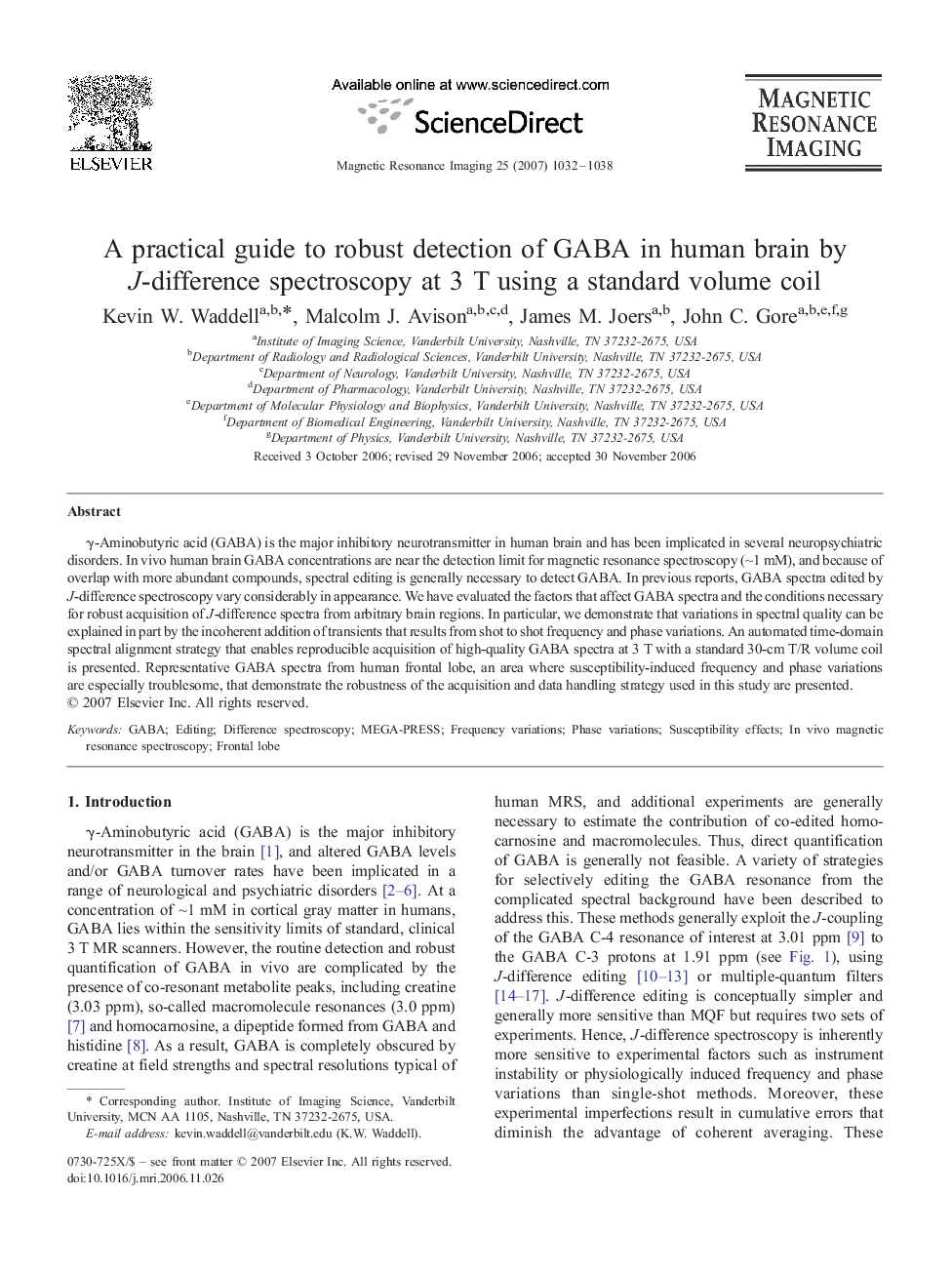| Article ID | Journal | Published Year | Pages | File Type |
|---|---|---|---|---|
| 1807550 | Magnetic Resonance Imaging | 2007 | 7 Pages |
γ-Aminobutyric acid (GABA) is the major inhibitory neurotransmitter in human brain and has been implicated in several neuropsychiatric disorders. In vivo human brain GABA concentrations are near the detection limit for magnetic resonance spectroscopy (∼1 mM), and because of overlap with more abundant compounds, spectral editing is generally necessary to detect GABA. In previous reports, GABA spectra edited by J-difference spectroscopy vary considerably in appearance. We have evaluated the factors that affect GABA spectra and the conditions necessary for robust acquisition of J-difference spectra from arbitrary brain regions. In particular, we demonstrate that variations in spectral quality can be explained in part by the incoherent addition of transients that results from shot to shot frequency and phase variations. An automated time-domain spectral alignment strategy that enables reproducible acquisition of high-quality GABA spectra at 3 T with a standard 30-cm T/R volume coil is presented. Representative GABA spectra from human frontal lobe, an area where susceptibility-induced frequency and phase variations are especially troublesome, that demonstrate the robustness of the acquisition and data handling strategy used in this study are presented.
